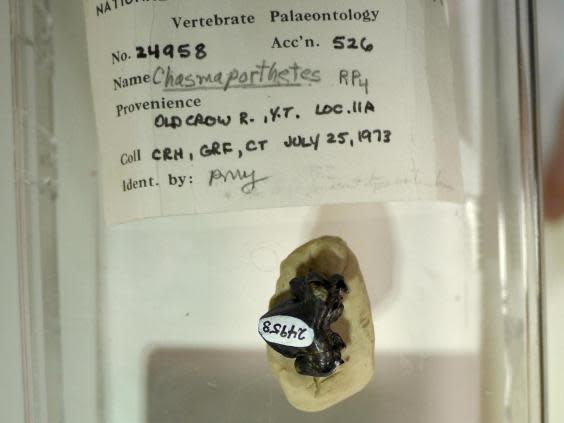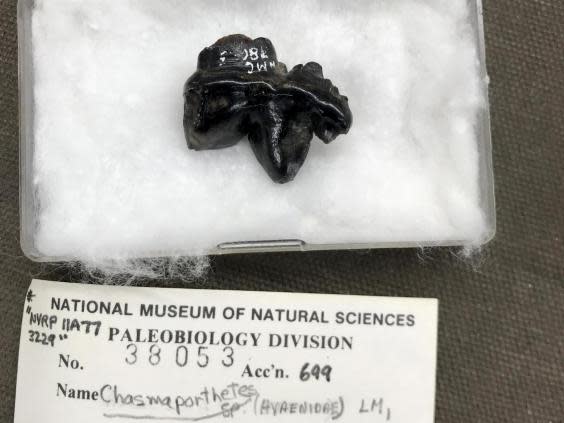Ancient hyenas once roamed the Arctic feasting on woolly mammoths, fossilised teeth reveal
Fierce Ice Age hyenas were roaming Canada's Arctic as long as 1.4 million years ago, according to researchers who identified a pair of fossilised teeth found in Yukon Territory in 1973.
The “running hyenas” would have eked out an existence hunting herds of horses and caribou, as well as scavenging carcasses of woolly mammoths or sabre-toothed cats living on the vast semi-frozen steppe.
The mysterious teeth, which had been sitting unidentified in museum drawers for more than 40 years, are the first evidence that highly adaptable wolf-sized hyenas were in the North American Arctic, according to the paper published in the journal Open Quaternary.
The fossilised teeth belonged to Chasmaporthetes ossifragus hyenas that roamed the Arctic between 850,000 and 1.4 million years ago, researchers say.
The findings fill an important gap in scientists’ knowledge of how hyenas reached North America, according to lead palaeontologist Dr Jack Tseng from the University at Buffalo.

He said: “Fossils of this genus of hyenas had been found in Africa, Europe and Asia, and also in the southern United States. But where and how did these animals get to North America? The teeth we studied, even though they were just two teeth, start to answer those questions.”
The bones suggest that ancient hyenas entered North America via Beringia where the Bering Land Bridge formed, connecting Asia with North America during periods of low sea levels.
From there, the animals made their way south to Mexico. The first hyenas known to have crossed into North America date back to around five million years ago.
“These rare records of hyenas in the Arctic fill in a massive gap in a location where we expected evidence of their crossing between continents, but had no proof until now,” said Dr Tseng.

The specimens were tucked away in the collections of the Canadian Museum of Nature in Ottawa and largely forgotten about until Dr Tseng discovered some old field notes describing the mysterious teeth. He drove to the museum and quickly identified them as belonging to the genus Chasmaporthetes.
Ancient hyenas had a diverse family history, with many dozens of species found in localities spanning the Northern Hemisphere.
Hyenas arose in Europe or Asia around 20 million years ago. They later made their way to Africa and a small number would have reached North America.
Chasmaporthetes had longer and more evenly sized legs than today’s hyenas and they also had a shallower skull, giving them a more wolf-like appearance.

 Yahoo News
Yahoo News 